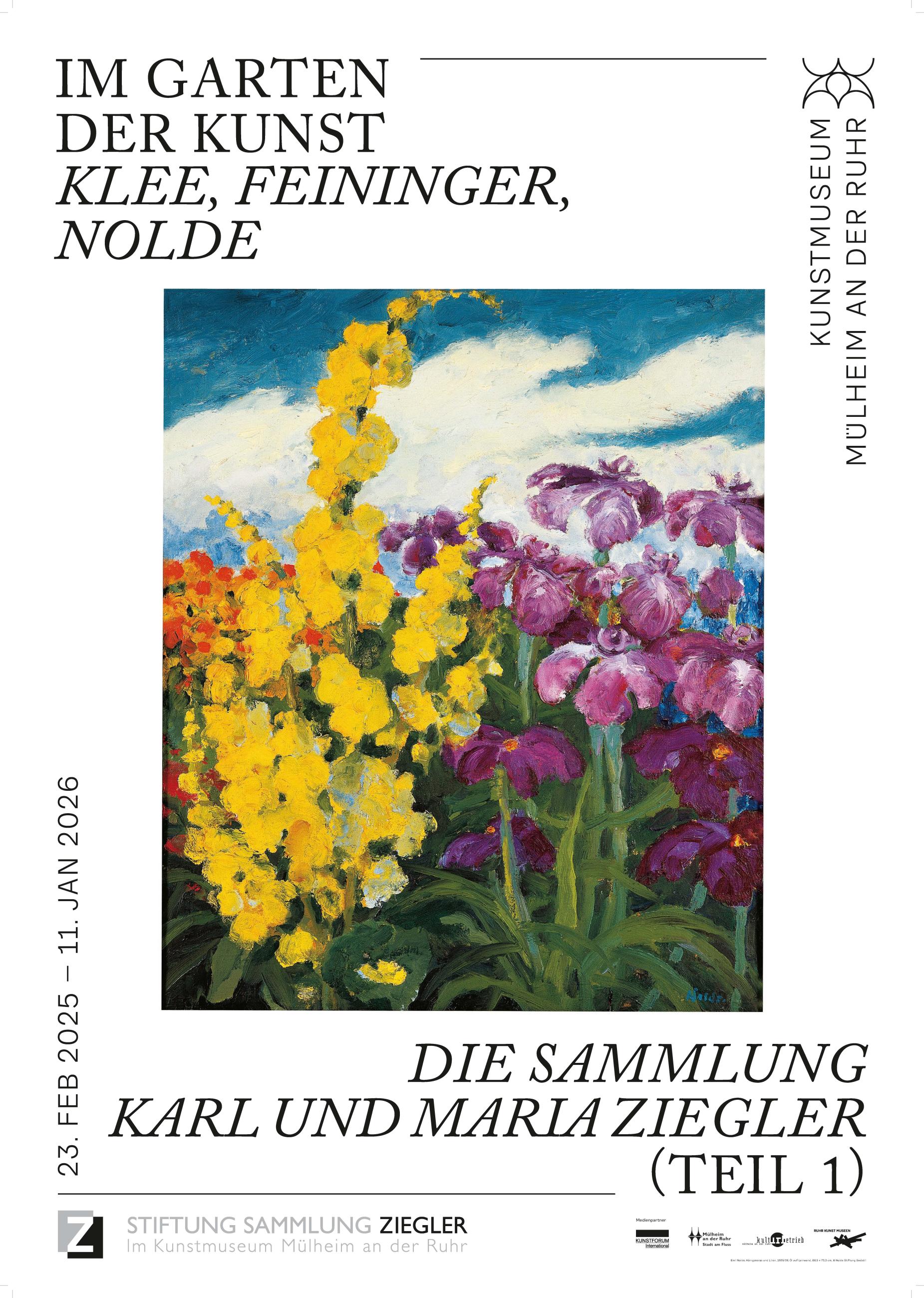
The exhibition will open on 22 February 2025 at 6 p.m. and will run from 23 February to 11 January 2026.
Karl and Maria Ziegler rarely spoke publicly about their passion for collecting, perhaps only once: „The joy of beauty was the only reason for acquiring the treasures that surrounded us“. They did not collect according to art-historical criteria, but according to purely aesthetic preferences, and the couple cultivated their „garden of art“ above all with the cheerful and intimate paintings of Expressionism.
If you want to know more about the Zieglers‘ art collection, you have to look at the paintings they chose to decorate their new home on the Kahlenberg in Mülheim an der Ruhr. Completed in 1957, the house and its large garden were within sight of the Kaiser-Wilhelm-Institute for Coal Research, where Professor Karl Ziegler had just made a groundbreaking discovery that would win him the Nobel Prize in Chemistry in 1963.
The first acquisitions, made in the late 1950s, already expressed the ‚joy of beauty‘ in a notably impressive way. In particular, the many floral still lifes are a reminder of how Maria Ziegler’s lavish and lovingly designed garden was continued in the living area in a blaze of colour.
The Museum’s Beletage, with its tiled stove, stucco and ornate wooden doors, provides a harmonious setting for the exhibition, which vividly illustrates the private origins of the Museum’s paintings. The exhibition also focuses on the collectors themselves, the environment in which the paintings were kept, and the next generation of the family, who established the Ziegler Collection Foundation in 2002, adding a further 72 major works of Expressionism to the collection.
The merger of the two collections in 2013 also resulted in a significant expansion of the individual groups of works. Paul Klee, Lyonel Feininger and Emil Nolde are among the protagonists of the collection, who will be honoured individually for the first time and presented in a special setting, supplemented by explanatory texts, films and audio information.
The second part of the exhibition in 2026 will focus on August Macke, Franz Marc and Alexej von Jawlensky.